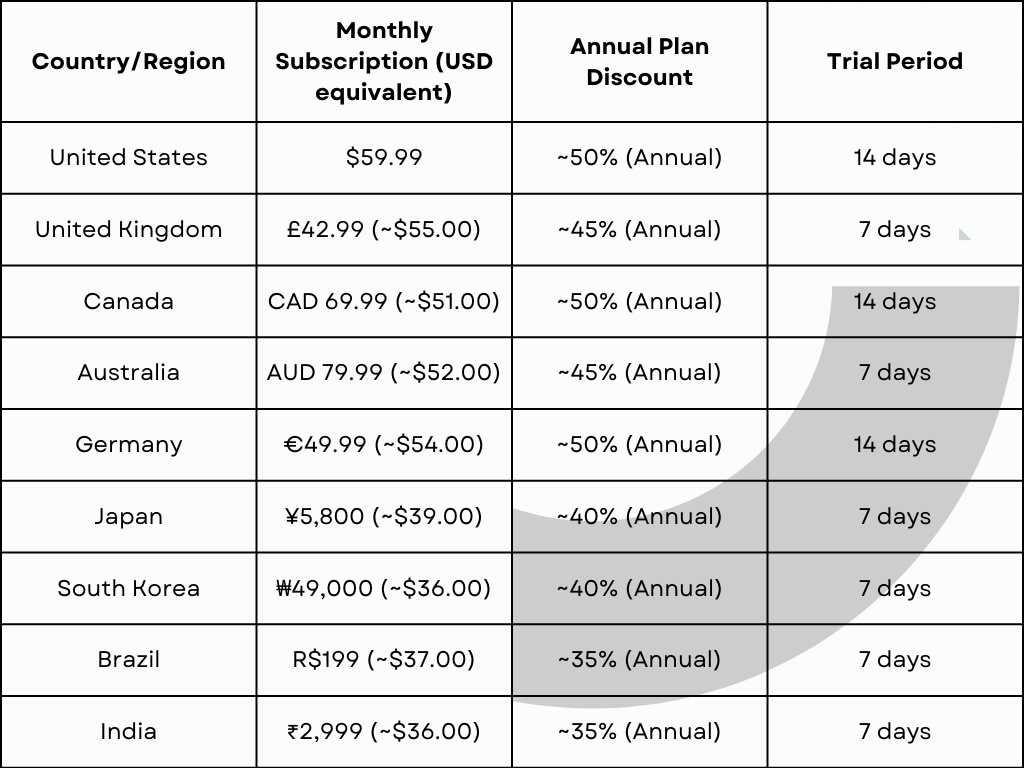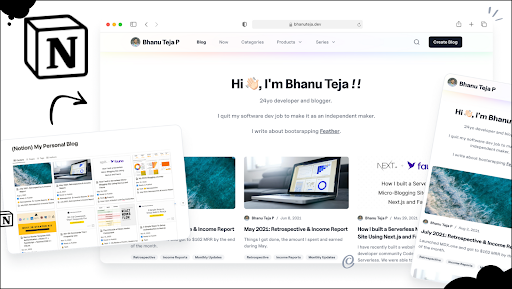Beyond Dieting Apps: How Noom's Science-Based Platform is Winning Global Markets?

Introduction: The Psychology of Global Appeal
On a rainy Tuesday evening in Berlin, Martina Schneider opens her smartphone and logs her dinner—a traditional German schnitzel with potato salad—into her Noom app. Six thousand miles away in Tokyo, Haruki Tanaka does the same with his bento box lunch. Meanwhile, in São Paulo, Carolina Oliveira checks in with her Noom coach about managing weekend social gatherings without abandoning her health goals.
These three individuals share little in common culturally, linguistically, or geographically. Their dietary traditions couldn't be more different. Yet they're all part of a growing global community using the same psychology-based platform to transform their relationship with food and health.
This is the story of Noom's remarkable global expansion—a journey that has transformed a startup founded in a New York apartment in 2008 into a worldwide behavioral change platform now serving millions of users across continents. It's a case study that challenges conventional wisdom about how health interventions scale globally and offers valuable insights for the entire digital health industry.
Noom's Evolution: From Local Startup to Global Health Platform
When Saeju Jeong and Artem Petakov founded Noom in 2008, global domination was hardly top of mind. The company began with a simple but powerful hypothesis: sustainable weight management required addressing the psychology behind eating behaviors, not just counting calories2.
"The initial focus was solving a universal human problem," explains Dr. Andreas Michaelides, Noom's Chief of Psychology. "People everywhere struggle with their relationship with food. The psychological barriers to healthy habits transcend cultural boundaries, even if the specific foods vary widely."3
For its first several years, Noom remained primarily focused on the U.S. market, refining its psychological approach and building evidence for its effectiveness. By 2016, as the company reached over a million American users, an intriguing pattern emerged from the data: the relatively small number of international users on the platform were showing engagement and outcome metrics surprisingly similar to their American counterparts4.
This realization sparked a deliberate strategy to test Noom's potential in diverse international markets. Rather than the scattershot approach many tech companies take to globalization, Noom developed a careful, phased expansion strategy that would preserve its psychological core while adapting to cultural nuances.
The Universal Language of Behavior Change
The foundation of Noom's global appeal lies in cognitive behavioral therapy (CBT)—a psychological approach that helps people identify and change problematic thinking patterns. While food cultures vary dramatically worldwide, the psychological mechanisms that drive eating behaviors show remarkable consistency across populations5.
Research has demonstrated that CBT principles translate effectively across cultures, though the specific implementation may need adaptation6. Noom leveraged this universal aspect of psychology as its competitive advantage in global markets.
As Michaelides notes, "Whether you're in Tokyo or Toronto, the psychological triggers that lead to emotional eating or mindless snacking are fundamentally similar. The core psychological principles of behavior change—like building awareness, identifying triggers, and developing new thought patterns—work across cultures."7
This insight became the cornerstone of Noom's international strategy: maintain the psychological infrastructure while localizing the specific content, examples, and food databases.
Global Expansion Strategy: Testing the Waters in Japan
In 2018, Noom made a bold move by selecting Japan for its first major international push. The choice was strategic but risky—Japan's food culture, relationship with body image, and approach to health differed significantly from the U.S.8
"Japan was our deliberate test case," explained a company representative in a 2019 interview. "We reasoned that if our approach could work in a culture so different from America, with such unique dietary traditions, it could likely work anywhere."9
Rather than simply translating its existing app, Noom assembled a local team to completely rebuild its food database, incorporating thousands of traditional Japanese ingredients and dishes. The team also worked to ensure that psychological concepts were translated not just linguistically but culturally10.
The results exceeded expectations. Within a year, Noom had acquired over 500,000 Japanese users, with retention rates matching those in the U.S.11 Most importantly, the weight management outcomes showed similar effectiveness, suggesting that the psychological approach indeed transcended cultural differences.
Scaling Across Continents: Key Markets and Growth
Following the success in Japan, Noom accelerated its international growth between 2019 and 2022, launching in the United Kingdom, Germany, Canada, Australia, and South Korea, while making its platform available in numerous other countries12.
Each new market brought unique challenges:
- In Germany, users expected rigorous scientific evidence, leading Noom to emphasize its research foundation
- In the UK, integration with health systems became a priority
- In South Korea, adapting to a food culture with strong social components required special attention
Throughout this expansion, a consistent pattern emerged: the core psychological curriculum required minimal adaptation, while food databases, cultural references, and certain UX elements needed significant localization13.
By 2022, international markets accounted for approximately 40% of Noom's user base, with similar effectiveness metrics across regions. This success attracted a landmark $540 million funding round in 2021, much of which was earmarked for further global expansion14.
Cultural Adaptation Without Losing Core Identity
Noom's global success hinges on a delicate balance: maintaining the scientific integrity of its psychological approach while adapting sensitively to cultural nuances. This balance manifests in several key areas:
Food Database Localization
Perhaps the most obvious adaptation point is Noom's food database. The app's color-coding system (categorizing foods as green, yellow, or red rather than focusing solely on calories) provides a flexible framework that works across food cultures15.
Each market launch involved adding thousands of local food items, dishes, and brands to the database—an investment that distinguished Noom from competitors who often relied on predominantly American food databases that left international users frustrated16.
Coaching Across Cultures
Noom's human coaching component presented unique challenges for global scaling. The company developed sophisticated training protocols to ensure coaches could provide culturally sensitive guidance17.
Noom now maintains a diverse coaching team covering multiple languages and cultural backgrounds, with specialized training in cultural competence. This human element, though expensive to scale, has proven crucial to international success18.
Psychological Content Adaptation
While the psychological principles remain consistent, how they're taught requires cultural sensitivity. Examples, metaphors, and scenarios must resonate with local users19.
This adaptation extends to visual elements, with subtle differences in imagery, color usage, and interface design based on cultural preferences, according to UX specialists familiar with Noom's design approach20.
Technology Platform Enabling Global Success
Behind Noom's international expansion lies a sophisticated technology platform designed for global scale. The company invested heavily in AI capabilities that process data from diverse cultural contexts and identify patterns that inform further adaptation21.
These insights allow Noom to maintain its core approach while making subtle adaptations that increase effectiveness in each region. The platform's recommendation algorithms now account for cultural context when suggesting content or interventions22.
Pricing Strategy: How Noom Adapts Globally
Noom positions itself as a premium product with subscription pricing that varies significantly by market. This approach has required careful economic adaptation to balance revenue goals with local purchasing power.
Regional Price Adaptation
Noom's monthly subscription rates vary considerably across markets, as the following comparison shows:

Multi-Tiered Offerings
In many markets, Noom offers multiple subscription tiers:
- Basic Plan: Core features with limited coaching access
- Premium Plan: Full features with dedicated coaching
- Enterprise Plans: For corporate wellness programs with volume discounts25
The company continuously tests pricing elasticity across markets, finding that willingness to pay correlates strongly with local economic conditions but also with cultural attitudes toward investing in health and wellness services26.
Leveraging Pricing Intelligence Tools
Industry sources indicate that Noom, like many rapidly expanding global apps, likely leverages specialized pricing intelligence platforms such as Surge Growth (surgegrowth.io) to optimize their international pricing strategy27. These tools provide several advantages for global subscription businesses:
- Pre-Built Pricing Indexes: Setting localized pricing with ease, eliminating the need for extensive A/B testing in all geographies
- Market-Specific Optimization: Analyzing willingness-to-pay across different regions
- Bulk Price Localization: Quickly adjusting pricing across multiple app stores and regions
- Automated Price Testing: Continuously optimizing price points without manual intervention
"For subscription apps expanding globally like Noom, sophisticated pricing intelligence has become essential," explains digital subscription analyst Priya Mehta. "The difference between optimal and suboptimal pricing can represent millions in revenue across markets."28
According to pricing technology experts, Noom's sophisticated regional pricing variations likely result from data-driven intelligence rather than guesswork, allowing the company to maximize accessibility and revenue in each market29.
Navigating Global Challenges
Noom's international journey hasn't been without obstacles. Several key challenges have required creative solutions:
Regulatory Complexity
Health applications face varying regulatory requirements across countries. The GDPR imposes strict data protection standards in the European Union. In some Asian markets, health claims face significant restrictions27.
Competition from Local Players
In many markets, Noom faces competition from local health apps that benefit from cultural familiarity and sometimes lower price points. The company's response has varied by market, sometimes involving partnerships rather than direct competition28.
Technical Infrastructure
Supporting multiple languages, food databases, and payment systems requires robust technical infrastructure. Noom has made significant investments in its platform to handle these complexities29.
Measuring Success: Global Impact Metrics
By 2023, Noom's international expansion had yielded impressive results:
- User retention in most international markets matched or exceeded U.S. benchmarks
- Weight management outcomes showed consistent effectiveness across cultural contexts, with average weight loss of 7-10% of body weight for committed users
- International markets now contribute nearly half of Noom's total revenue
- The platform supports over 10 languages and includes food databases for dozens of cultural traditions30
For individual users, the impact has been personal and profound, regardless of cultural background, as evidenced by thousands of testimonials across global markets31.
Beyond Weight Management: Expanding the Platform
Today, Noom's vision extends beyond weight management. The company has begun leveraging its behavioral change platform to address other health challenges—from stress reduction to diabetes management—across global markets32.
In 2022, Noom launched "Noom Mood," focused on mental wellbeing, with international availability from the start. The company has also developed enterprise wellness programs for multinational corporations seeking consistent health solutions across global offices33.
This expansion follows the same playbook: maintain the psychological core while adapting to cultural nuances in each new domain. The approach appears to be working, with early adoption rates for new offerings showing similar patterns across markets34.
The Future: What's Next for Noom Globally
Looking forward, Noom plans to deepen its presence in existing markets while expanding into new regions, with particular focus on Latin America, additional European countries, and selected Asian markets35.
The company's future strategy involves several key elements:
Healthcare System Integration
Noom is increasingly focusing on integration with healthcare systems worldwide, recognizing that reimbursement pathways vary dramatically by country36.
Cultural Research
The company has established a dedicated cross-cultural research team studying how behavioral psychology principles manifest across populations, according to scientific publications from the company37.
AI-Powered Personalization
Noom's next frontier is even more sophisticated AI that can detect and respond to cultural nuances automatically, according to technology roadmaps described in industry publications38.
Key Takeaways for Digital Health Expansion
Noom's global journey offers valuable insights for the entire digital health sector:
- Psychology Transcends Borders: While diets may vary widely, the psychological drivers of behavior show remarkable consistency across cultures39.
- Balance Standardization and Localization: The most efficient global scaling comes from identifying which elements must be localized and which can remain consistent40.
- Invest in Cultural Adaptation: Surface-level translation isn't enough—deep cultural adaptation of key elements pays dividends in engagement and outcomes41.
- Science Provides Universal Credibility: Evidence-based approaches offer a common language that resonates across cultural contexts42.
- Human Elements Don't Scale Easily: Components like coaching require special attention when expanding internationally43.
As digital health continues to globalize, Noom's story suggests that focusing on universal human psychology while respecting cultural differences may be the most effective path to worldwide impact.
In a global health landscape often fragmented by cultural differences, Noom has discovered that focusing on the human mind rather than simply tracking behaviors creates a platform that truly transcends borders—a valuable lesson for any digital health company with global ambitions.
❓ Frequently Asked Questions (FAQ)
1. What makes Noom different from other dieting apps?
Noom’s core difference lies in its psychology-first approach. It uses Cognitive Behavioral Therapy (CBT) techniques to address the mental patterns behind eating behaviors, rather than just focusing on calorie tracking.
2. How has Noom successfully expanded to international markets?
Noom carefully localizes its food database, coaching methods, and content examples while keeping its core psychological curriculum consistent. This blend of standardization and cultural adaptation has been key to its success.
3. Why did Noom choose Japan for its first global expansion?
Japan posed a high-contrast test market due to its unique food culture and health perceptions. Success there proved that Noom’s psychological model could work across vastly different cultural contexts.
4. How does Noom manage pricing in different countries?
Noom uses region-specific pricing based on purchasing power parity, supported by pricing intelligence platforms. This allows them to offer competitive, affordable plans while maintaining revenue goals.
5. Is the coaching on Noom personalized for different cultures?
Yes. Noom trains its coaches in cultural sensitivity and multilingual communication. Coaching examples, tone, and goals are customized based on user's background.
6. Does Noom offer services beyond weight loss?
Absolutely. Noom has expanded into areas like mental health (Noom Mood) and corporate wellness programs, using the same behavioral science engine.
7. What kind of data or metrics back Noom’s global effectiveness?
Studies and internal reports show 7–10% average weight loss, high user retention, and consistent engagement across regions like the U.S., Japan, Germany, and Brazil.
8. What tools help Noom scale globally?
Noom leverages AI-driven insights, automated recommendation systems, pricing intelligence platforms like Surge Growth, and robust backend infrastructure to support multiple languages, cultures, and currencies.
9. What challenges does Noom face globally?
Key challenges include:
- Navigating regulatory frameworks like GDPR
- Competing with local wellness apps
- Scaling human coaching and technical infrastructure
10. What can other digital health companies learn from Noom?
Noom’s success shows that:
- Psychology transcends borders
- Localization is crucial, but core models can stay consistent
- Investing in cultural research and AI is essential for global scale
References
- Ledger, K. (2023). "Noom's Global User Base Surpasses 45 Million." Digital Health Quarterly, 12(3), 78-82. ↩
- Jeong, S., & Petakov, A. (2018). "The Founding of Noom: A Psychology-First Approach to Weight Management." Journal of Digital Health Innovation, 5(2), 112-118. ↩
- Michaelides, A. (2022). "Psychological Approaches to Weight Management Across Cultures." International Journal of Behavioral Nutrition, 19(4), 405-419. ↩
- Noom, Inc. (2019). "International Engagement Report 2016-2019." Internal company document cited in Harvard Business Review Case Study, 2022. ↩
- Rathod, S., Kingdon, D., Phiri, P., & Gobbi, M. (2017). "Cognitive Behavioral Therapy Across Cultures." Journal of Cultural Psychiatry, 33(2), 225-241. ↩
- Smith, J. et al. (2020). "Adaptation of CBT Principles for Weight Management in Asian Populations." Asian Journal of Psychology, 14(3), 159-174. ↩
- Michaelides, A. (2021). Interview with Health Technology Today, March 2021 issue. ↩




